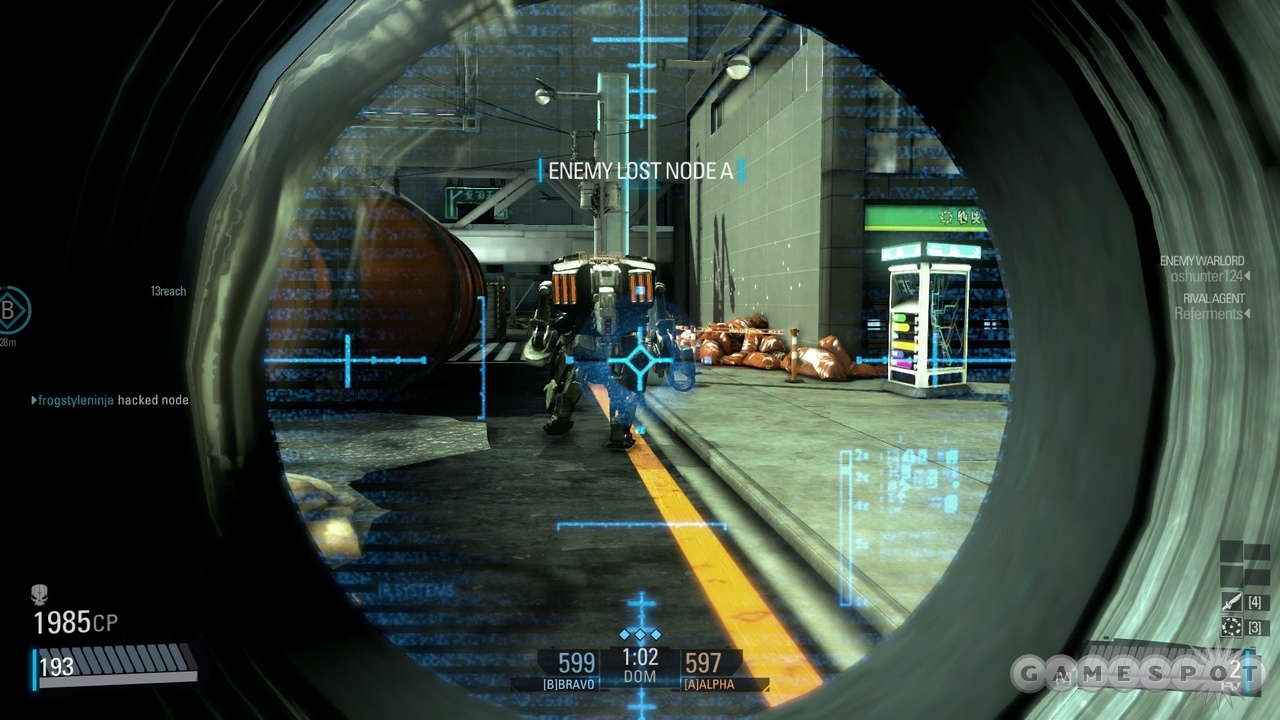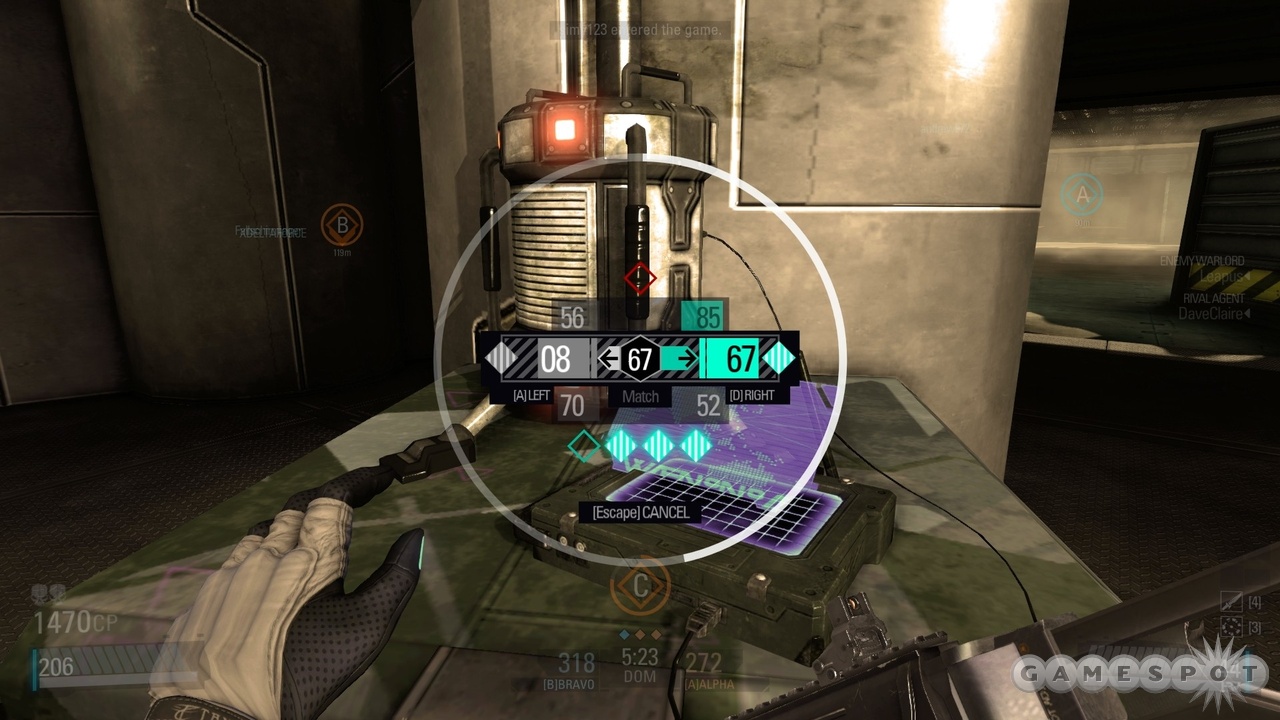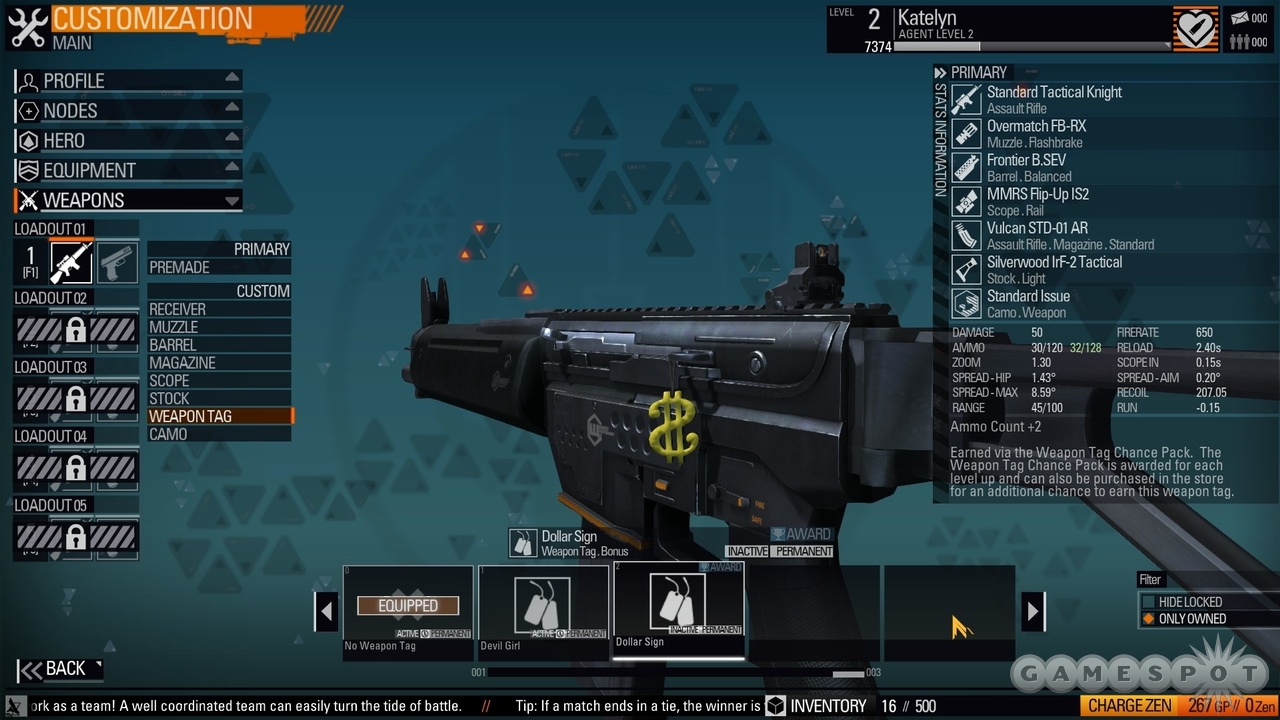It's the future, that grim era some years ahead of us in which skies are almost always overcast, giant holograms of corporate mascots compete with each other for our attention, and opposing teams of agents shoot at each other in urban and industrial zones for reasons that no longer matter. If you choose to cast your lot with the fighters of Blacklight: Retribution, you'll experience competitive first-person shooting that, for all its gun customization mechanics and other marquee features, feels standard and commonplace. Still, it's competent and, like all competent shooters, it's sometimes thrilling. It's also free to play, so you can get your shooter fix in Retribution without making yourself a penny poorer, though the game certainly makes spending money tough to resist after you've sunk a few hours into it.
Whereas its predecessor, Blacklight: Tango Down, was introduced as a $15 team-based multiplayer shooter for PC and consoles, Retribution does away with the cost of entry. After creating your account and downloading the game for free, you can dive right into Deathmatch, Team Deathmatch, Capture the Flag, King of the Hill, and Domination competitions. Servers called proving grounds are limited to players at level 10 and below, giving you a chance to familiarize yourself with the maps and controls while competing against other relatively new players. But if you've played just about any competitive first-person shooter in the past five years, you'll probably feel less like you need to get acclimated to Retribution, and more like it's a game you've already played.
The maps are well designed, with plenty of open areas and cramped corridors. The controls are responsive, and your agent moves about the battlefield at a pace that suggests he or she is actually inhabiting the world and not just gliding through it. You have enough health to withstand a few hits before you go down, but a single shot to the head means lights out, so you always feel vulnerable. Sprinting down hallways in pursuit of human quarry is exhilarating, and taking down a distant foe with a sniper rifle is as satisfying as you'd expect. And that's the problem; it's all very expected. Retribution doesn't have a strong sense of identity to help it stand out from the numerous other games of the same type.

That's not to say that it's wholly generic. There are a few elements that give Retribution a touch of personality. The environments borrow heavily from the Blade Runner vision of the future, but the steam hissing from pipes, the neon signs on city streets, and the cool blue color tones of industrial facilities create a sense of a grim, emotionally cold era. Sound effects pull you into this world; bullets whiz convincingly past your head, and the sounds of your footsteps on different surfaces lend your movements a feeling of weight. Your hyper-reality visor, or HRV, also differentiates Retribution just a bit from all the other shooters on the market. Returning from Tango Down, the HRV lets you see through walls for a moment, enabling you to spot approaching enemies or figure out where that pesky enemy sniper is hiding. The visor's effect doesn't last long before it needs time to recharge, so you can't rely on it too often; it's a tactical tool that, if used well, can give you an edge in certain situations.
One such situation arises when an enemy soldier summons a hardsuit out of the sky. You earn combat points for your actions during a match, and these points (called CP) can be spent at weapon depots scattered across the map to purchase ammo and health refills, heavy weapons, and the mechanized, heavily armed and armored hardsuits. Facing one of these with an assault rifle or other standard weapon is typically suicide--the minigun and railgun on the suit can make mincemeat out of agents--but a quick glance at the hardsuit with an HRV reveals a randomly generated weak point, so at least you can try to do some significant damage before you go down.

Hardsuits often start appearing several minutes into matches of any type, once players have earned enough CP to start purchasing them. They can be tremendously effective on the battlefield--using one to defend a node during a King of the Hill match, for instance, can make life much more difficult for the opposing team--but the contraptions have their drawbacks. In addition to the aforementioned weak point, they're susceptible to heavy weapon fire, like the Stinger missiles that can be purchased from the depot. You might opt to purchase a flamethrower, run up to a hardsuit, and cook the driver, which doesn't take long and which then lets you snag the hardsuit for yourself. The hardsuits are slow and unwieldy, so for all their power, they're quite vulnerable without swift agents on foot fending off such attacks.
This lack of speed and maneuverability is a sensible trade-off for the tremendous firepower of the hardsuit, and it encourages teams to work well together to make the most of these assets. But it also prevents the hardsuit from being enjoyable to use. Making your way from one part of the battlefield to another often involves fidgeting to squeeze the suit through corridors, and if agents are attacking you from behind, turning around to get a shot at them is a laborious process. The result is that rather than serving as an enjoyable reward for your hard-earned CP, the hardsuit feels more like a responsibility some agents need to take on to help their team remain competitive in the later stages of a match.
In addition to the combat points you earn during a match, you accumulate experience points across all of your matches, and gradually level up your agent. Each time you level up, you get a bundle of trial items. These can include anything from body armor to gun scopes to devastating heavy weapons you can stock depots with--but they're only temporary. After three days, the items expire. If you got attached to that spiffy helmet or deployable turret while it was lent to you, you have two options. You can spend an in-game currency called GP, which is slowly earned; permanently adding an item to your inventory typically costs thousands of GP, the result of many hours spent in-game. Or you can use ZEN, publisher Perfect World's cross-game currency that you purchase with real money.
A decent scope for your gun might cost 350 ZEN ($3.50), while body armor might run you 750 ZEN or so. If you limit yourself to buying new gear with GP, the rate at which you can purchase items is slow indeed, which makes spending money an attractive option. And whereas GP can only be used to purchase items at or below your character's level--the deployable turret is a level 16 item, for instance--ZEN purchases are free of such shackles. If you kick in the cash, you can outfit your agent with any gear at any level. There are also some items, and even a few "hero" characters with distinct appearances and predetermined loadouts, that can be purchased only with ZEN.

Naturally, the items you acquire with GP or ZEN can come in handy in combat. A good scope can make landing a shot that much easier, and the extra health afforded you by a specific type of body armor could save your life. But most equipment has a flip side to any benefit it offers; that body armor that increases your health might also reduce your speed, and that muzzle that boosts your gun's damage may also cripple its range. So you're not at a tremendous disadvantage if you opt not to spend money. But once you get a chance to use a specific type of gun or some other nifty piece of equipment after receiving it for a three-day trial, you may find it hard to part with, and eventually, relying on the same old weapons and accoutrements grows tiresome. With the prices of gear being what they are, once you start spending money, it's very easy to quickly spend far more than the $10 or $15 you might expect to pay for a game like Retribution if it weren't free to play.
Weapon customization runs deep in Retribution. You can outfit your guns with different muzzles, barrels, magazines, scopes, and stocks, all of which have an impact on various facets of a weapon's performance, such as recoil, range, damage, and spread--the angle at which a bullet might exit the barrel. If you enjoy tinkering, the statistical minutiae of things like spread variance may inspire you to try all sorts of combinations to design a gun that's to your liking, but you can also largely ignore that stuff and dive right into the action if you prefer. You also acquire nodes as you play that you can activate for minor bonuses such as a 1 percent increase to your ammo damage or a 2 percent increase to your CP earnings.

But none of this customization changes the fact that, when it comes time to fight, Retribution feels a lot like any number of other shooters you've probably already played. The HRV is a useful tool, but far from a game changer, and the hardsuit, for all its power, isn't fun to use. Additional game modes called Siege and Netwar are in the works, and may help Retribution stand out a bit more from the pack, but as it stands, this is just another shooter. Still, it's solid and often exciting; if you've got a craving for standard shooter thrills, Retribution may satisfy those cravings without costing you a dime.